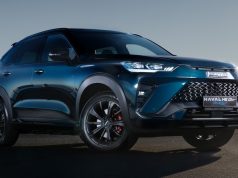The new, all-electric MINI Cooper will be available in two model variants, E and SE, with different battery sizes and power outputs. Even the entry-level Cooper E could almost double the range of the current SE, making the newcomers more than mere city cars.
MINI is one of many established carmakers ditching the internal combustion engine (ICE) in favour of fully electric propulsion. But it has just one electric vehicle (EV) in its product portfolio: an ICE MINI with its engine and auxiliaries ripped out and replaced with a small-ish battery and electric motor.
Now the launch of the brand’s first purpose-built EV is imminent and production models are likely to reach South Africa in 2024.

Bye-bye to range anxiety
In contrast to the current electric MINI Cooper SE, the new E and SE will rarely, if ever, torment owners with range anxiety.
Testing the Cooper SE in 2021, my drive from Hermanus to Somerset West via the Franschhoek Motor Museum required a top-up detour. That’s because the current Cooper SE and its 32.6 kWh battery achieve a range of about 160 kilometres on the open road. Luckily, this is about to change.

Two battery sizes
A media release from BMW, MINI’s parent company, states that the battery capacity in the new MINI Cooper E is 40.7 kWh, while in the MINI Cooper SE it is 54.2 kWh. “This gives the new models a predicted range of between 300 and 400 kilometres, thereby noticeably extending the radius for excursions within the urban setting and beyond,” it adds.
[mailchimp_list]
Unfortunately, BMW did not mention the cars’ torque or power outputs. According to Autocar, the E delivers 135 kW and the SE 160 kW.
Because the new electric Cooper is a purpose-built EV, and uses BMW’s superbly efficient electric drivetrains, it should get more miles per kilowatt-hour than its competitors, or predecessor. So, owners can expect an estimated range of 260 kilometres from the E and 350 kilometres from the SE. No indication of pricing has been divulged, but the current Cooper SE sells for R742 100 to R745 400, without added extras.






























